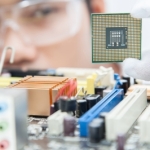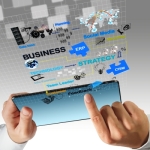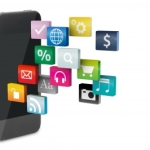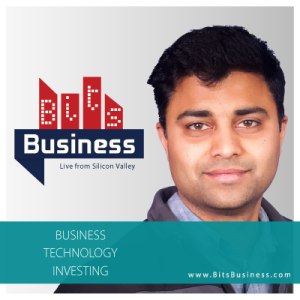Anatomy of the IT industry
— February 3, 2015We often hear about the IT industry or IT sector in media and in our conversations with friends, coworkers and family. However there are many interpretations of the IT industry.
In this article I will try to present an overview of the IT industry and introduce various opportunities for employment and investment.
What Is Information Technology ?
Here’s the formal definition of information technology according to the Oxford University’ Dictionary of Physics:
Information technology (IT) is the application of computers and telecommunications equipment to store, retrieve, transmit and manipulate data
When we use IT in our day-to-day life we interpret it in various ways, depending on the context and our exposure. In India, IT is generally attributed to software consulting or services. Infosys for example is considered the poster child of the IT revolution in India. This results in misrepresentation of the IT industry. In fact there are many multi-billion dollar industries in the IT sector. Each has sub- categories that are industries by themselves.
The major industries within the IT sector can be broadly classified as hardware, software and services. There are many industries within each of these categories.
Hardware
Hardware is the physical parts and components that help run all the software applications we use in our daily lives. The laptop or smartphone we use is made of many components such as a monitor, a keyboard, a hard drive disk (HDD), graphic cards, sound cards, memory chips and a motherboard.
 There are multiple industries within this category and they can be broadly classified into the following
There are multiple industries within this category and they can be broadly classified into the following
- Semiconductors
- Consumer electronics
- Enterprise systems
- Enterprise networking
The semiconductor industry consists of companies engaged in the design and fabrication of semiconductor devices such as integrated circuits (IC) , microprocessors, random access memory (RAM) , read only memory (ROM). Companies like Intel, Texas Instruments and Advanced Micro Devices (AMD) are some of the dominant players in this industry.
According to Wikipedia consumer electronics are electronic equipment intended for everyday use, most often in entertainment, communications and office productivity. Personal computers, smartphones, tablets, digital cameras and game consoles are some of the popular equipment we use in our daily lives. Apple, Sony, Toshiba, Samsung and Microsoft are household names in this industry.
From a hardware perspective, enterprise systems are the servers, mainframes,storage systems,etc. that businesses use as part of their IT infrastructure. These systems are designed to manage large volumes of data and provide high levels of performance and reliability. Some of the top players in this industry are EMC, IBM, HP and Dell.
The enterprise networking industry consists of companies engaged in the design, manufacturing and marketing of mostly internet protocol (IP) based networking products and services. These products are essential for enterprises to establish communication among its software systems and external stakeholders. Some of the popular companies in this industry are Cisco Systems, Juniper Networks, Dell and Huawei.
image credits : suphakit73 and www.freedigitalphotos.net
Software
Software can be broadly classified into two main categories, consumer and enterprise software. However, there are multiple industries in both categories.
Enterprise software
Enterprise software is applications and platforms that are used to satisfy the requirements of businesses rather than individuals. These applications can be installed as part of the IT infrastructure of an enterprise or through the cloud-based delivery model, which is also known as software as a service (SaaS).
Following are some of the popular industries within the Enterprise software ecosystem.
image credits : nokhoog_buchachon and www.freedigitalphotos.net
Enterprise Systems is a term I have used in this article to group the fundamental software components that power the rest of the enterprise applications. These components include
- Enterprise operating systems like AIX ( a Unix based OS by IBM), RedHat Linux, Windows Enterprise OS and Sun Solaris by Oracle
- Database systems from Oracle database & MySql (Oracle) , DB2 (IBM), Sybase (SAP) , SQLServer (Microsoft) PostgressSQL (Opensource)
- Virtualization platforms, specifically emulators and hypervisors that emulate the whole physical computer machine, often providing multiple virtual machines on one physical platform.VMware is the pioneer and global leader in virtualization and cloud infrastructure.
Enterprise resource planning (ERP) systems allows an enterprise to use a suite of integrated software applications to manage business processes and automate back-office functions. ERP systems have multiple functional modules for each department of a typical enterprise such as finance, human-resource, manufacturing etc. ERP systems are installed as part of the customer’s IT infrastructure or hosted remotely as a service, also known as Cloud ERP. Some of the popular companies in this industry by market share are SAP, Oracle, Sage, Infor and Microsoft
Customer relationship management systems (CRM) help companies organize, automate and synchronize sales, marketing, customer service, and technical support. Similar to ERP systems these systems can be deployed as part of a company’s IT infrastructure or in the Cloud. Some of the dominant players in this industry are Microsoft (Microsoft Dynamics CRM) , Salesforce , SAP and Oracle.
Middleware consists of software components that connects multiple software platforms within an enterprise and with its customers, vendors and partners. Middleware is like the arteries in the human body; they keep the data flowing between multiple components in an enterprise IT infrastructure. IBM is considered a dominant player in this industry, followed by Oracle and Microsoft. Tibco and Software AG focus exclusively on Middleware and are considered strong niche players.
I have grouped software products that helps enterprises to facilitate collaboration among its employees and make them productive at their work. Some of the popular software products in this category is the Microsoft Office suite, which consists of Word, Excel, Powerpoint and Outlook/Messenger. These tools help professionals share ideas, make presentations, automate calculations and collaborate with each-other. Other competing products in this group are Google Apps for work and IBM Lotus Notes.
One of the latest trends in the IT industry is “Big Data”. Many in the industry acknowledge that “data is the new oil” and will fuel innovation in many industries. The amount of data created by individuals and businesses in one day is more than what was created in centuries in the past. This has created an opportunity for software companies to build products that can help businesses making sense of all the data that is being generated. Some of the leading vendors of software in this area are IBM, EMC and Microsoft.
Business process management is a methodology for augmenting and optimizing the workflows and processes in a business by using technology. One can view BPM as the bridge between business and information technology. The four critical components of a BPM software suit are
- Process engine – Software applications to model and automate business process
- Business analytics —Provide managers with business intelligence dashboards, which help them identify bottlenecks, trends and opportunities
- Content management — Provides a system for storing and securing electronic documents and other media.
- Collaboration tools — Remove intra- and interdepartmental communication barriers through dynamic workspaces
Some of the dominant players in this area are IBM and Tibco
Consumer software
- Operating systems
- Productivity, collaboration and communication
- Games and entertainment
Operating system (OS) are software that manages computing hardware and software resources. Operating systems provide common services (also known as API) which are essential for software applications like MS Word and Adobe Acrobat to function. We are all familiar with operating systems like Windows form Microsoft and OS X from Apple, which are the operating systems that run most of our PC’s and laptops. Android form Google and iOS from Apple are popular operating systems for mobile devices.
Productivity, collaboration and communication: Most of us use multiple tools to communicate with our friends, share our pictures, documents or experiences, find jobs and dates, search for information, get directions and more every day. There are many tools available at our finger tips ( literally ) as mobile apps or online as websites and software on our PC’s. These tools help us be more productive or collaborate and communicate with our friends and family. Some of the popular products in this sector are
- Microsoft: Office suite of applications including Word, Excel and PowerPoint
- Adobe: Adobe Acrobat editor, Photoshop for image editing etc.
- Google: Search, email, maps, documents etc.
- Facebook: photo sharing, messages, news feed etc.
- Linkedin: Job search, profile pages , passive recruiting
- Dropbox/Evernote: document storage and sharing
- Yahoo: Portals for finance, sports , health and email/messaging
- Priceline/Orbitz: Airline tickets, hotel and car rental online
There are many other forms of digital entertainment today including digital animation lead by Pixar ( now part of Disney), and digital audio, led by Apple’s iPod and gaming, led by Electronic Arts.
Considered an obsession of the nerds in the early 1970’s, the computer gaming industry has grown into an industry that generated annual revenue of 45 billion dollars in 2014.There are many forms of gaming software depending on the platform, ranging from the traditional PC and gaming stations to mobile devices and 3D/Virtual reality platforms. There are many players in this industry. Some of the top gaming companies are Electronic Arts, King, Sony, Microsoft and Nintendo
Image credits : KROMKRATHOG and www.freedigitalphotos.net
Consulting and Services
- Technology Consulting
- Outsourcing
- Computing infrastructure services
Companies engaged in technology consulting, also known as IT consulting, advise companies on using information technology to meet their business objectives. In addition to this type of advise, companies need help with developing, implementing, deploying and managing IT systems and services, known as IT outsourcing. Most of the IT consulting companies offer outsourcing services to their customers. Some of the top players in this sector are Accenture, IBM, Infosys and Wipro. These companies serve businesses in most sectors of the economy, including finance, banking, health care , retail, energy and many more.
One of the recent trends in the IT industry is “Infrastructure as a Service” where computing resources are hosted by providers and offered as a service on demand and as needed. This trend has the potential for disrupting many industries within IT industry. Amazon, IBM Softlayer and Microsoft Azure are some of the major players in this area.




Leave a reply